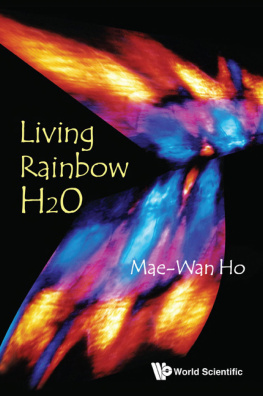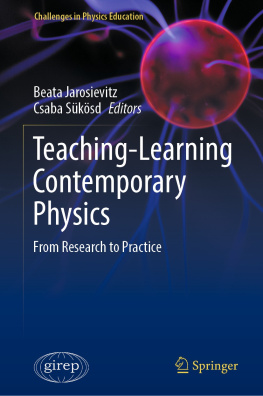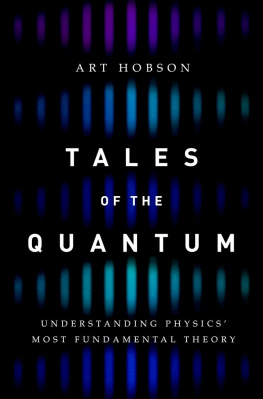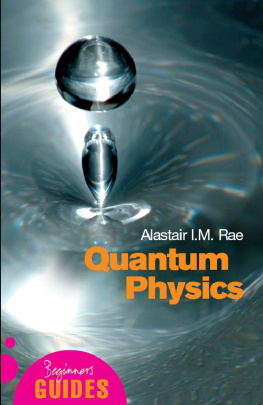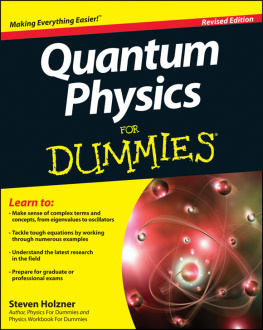Cover
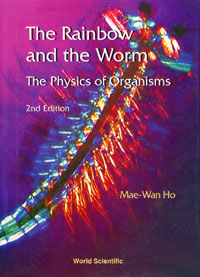
| title | : | The Rainbow and the Worm : The Physics of Organisms |
| author | : | Ho, Mae-Wan. |
| publisher | : | World Scientific Publishing Co. |
| isbn10 | asin | : | 9810234260 |
| print isbn13 | : | 9789810234263 |
| ebook isbn13 | : | 9789810248130 |
| language | : | English |
| subject | Biology--Philosophy, Life (Biology) , Biophysics. |
| publication date | : | 1998 |
| lcc | : | QH331H6 1998eb |
| ddc | : | 570.1 |
| subject | : | Biology--Philosophy, Life (Biology) , Biophysics. |
Page i
The Rainbow
and the Worm
The Physics of Organisms
2nd Edition
Page ii
This page intentionally left blank
Page iii
The Rainbow
and the Worm
The Physics of Organisms
2nd Edition
Mae-Wan Ho

Page iv
Published by
World Scientific Publishing Co. Pte. Ltd.
P O Box 128, Farrer Road, Singapore 912805
USA office: Suite 1B, 1060 Main Street, River Edge, NJ 07661
UK office: 57 Shelton Street, Covent Garden, London WC2H 9HE
British Library Cataloguing-in-Publication Data
A catalogue record for this book is available from the British Library.
THE RAINBOW AND THE WORM (2nd Edition)
The Physics of Organisms
Copyright 1998 by World Scientific Publishing Co. Pte. Ltd.
All rights reserved. This book, or parts thereof, may not be reproduced in any form or by any means, electronic or mechanical, including photocopying, recording or any information storage and retrieval system now known or to be invented, without written permission from the Publisher.
For photocopying of material in this volume, please pay a copying fee through the Copyright Clearance Center, Inc., 222 Rosewood Drive, Danvers, MA 01923, USA. In this case permission to photocopy is not required from the publisher.
ISBN 981-02-3426-0
ISBN 981-02-3427-9 (pbk)
Printed in Singapore by Uto-Print
Page v
Preface to Second Edition
Why produce a new Edition of this book?
First, it is still the only book of its kind. Second, it has made me many friends since it appeared in print in 1993, some of whom became my collaborators in research. Third, all the friends I have made taught me a great deal more about the subject, thus revealing the shortcomings of my book. Fourth, while the book has lost little of its original appeal, there has been significant progress in the subject matter, both in the general scientific literature, and in research done by myself and my collaborators since the book was published. For all those reasons, I believe a new Edition is necessary to do justice to the book and its subject matter.
Indeed, the progress made since 1993 warrants at least 3 new Chapters: 6, 11 and 12. Chapter 6 presents a thermodynamics of organized complexity especially applicable to living systems, and contains work that I have done since 1993, which, in many ways, extends and completes the thermodynamic enquiry into the living system presented in the early Chapters. Chapters 11 and 12 deal with the idea that organisms are liquid crystalline, again, extending work which began in 1993, to which my coworkers and collaborators have contributed an enormous amount. The liquid crystalline nature of organisms, may, to a large extent, account for their most paradoxical properties, including pattern formation and the faculties of consciousness.
The additional Chapters have been intercalated into the previous Edition, which has been preserved in its form and substance, with extensive up-dating throughout. I have been able to simplify and clarify the narrative with the benefit of hindsight, at the same time fleshing out the original account with fresh evidence. All the Chapters are inevitably longer, but that is more than justified by the wealth of additional material which is beginning to give clear definition to a theory of the organism. Let me list some of the highlights.
Page vi
Chapter 3 contains new evidence for resonant energy transfer in living systems. Chapter 4 contains new information on the Bnard cells from Koschmeider's book on the subject published in 1993. Chapter 7 includes extra material on the structure of water. Chapter 8 includes a description of Donald Ingber's model of the cell as a tensgrity system. Chapter 9 has been sustantially edited, with more evidence on the biological effects of electromagnetic fields. Chapter 10 contains a substantial update on research into biophotons and their relationship to energy mobilization. Chapters 13-15 connect entropy generation with quantum decoherence and refer to recent experimental work demonstrating quantum superposition on the mesoscopic scale. There is a new Section on the fractal structure of organic space-time. There are, of course, numerous extra references.
I hope the reader will find much to think about and will continue to point out to me the shortcomings of this volume.
It remains for me to thank the many friends who have helped shape this Edition. David Knight introduced me to much of the literature on liquid crystals, collaborated with us in the experimental work, offering expert advice and brilliant ideas at all times. Eric Schneider told me about Koshmeider's work and a wealth of other literature on the thermodynamics of living systems, including his own excellent work on ecosystems. I benefited enormously by having been guest of him and his wife Carol in their beautiful home in Montana, where I learned a lot, not only about thermodynamics, but also ecology and energy metabolism of organisms. Philip Herbomel brought zebrafish to our laboratory and spent a week with us, studying its development. He acquainted me with many exciting developments in France, including Nottale's work on fractal space-time. Clive Kilmister suggested to me the interesting analogy between noninvasive and adiabatic measurements. Ervin Laszlo inspired me with his book, The Interconnected Universe , to the possibility that the liquid cyrstalline continuum of the body may be a quantum holographic medium. He has also kindly arranged for my book to be translated into German, which is another reason for this new Edition.
Page vii
Douglas Kell and Rickey Welch connected me to the whole radical world of biothermokinetics, which shows that there is life after the chemiosmotic theory. Franklin Harold wrote to tell me he swallowed neither worm nor rainbow whole, and challenged me to think more deeply on bioenergetics. James Clegg initiated me into the mysteries of Artemia , the brine shrimp whose portrait graces the front cover of this book. Rufus Lumry taught me everything I have always wanted to know about the bioenergetics of enzyme action and the importance of water and hydrogen bonds.
Walter Freeman introduced me to his fascinating work on the collective, possibly nonlocal synchronization of brain waves. Alex Andrews spurred me on to write a paper on the subject. Peter Marcer drew my attention to quantum holography, quantum computing and his fascinating model of quantum perception. Michael Conforti brought me into the world of Jungian archetypes and the collective unconscious.
Next page

